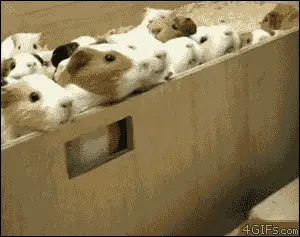Yes, ladies, gentlemen, and seemingly-dead plants, it’s happening: after over 10 months of incremental work from the community, we are now releasing version 0.6 of our favorite personal productivity app, Getting Things GNOME. This release comes with some new features, lots of code improvements, many bugfixes and UX refinements (I am told that the “Better procrastination button”, presented below, deserves a place in the Museum of Modern Art).
Save the children, and the parents… tasks.
GTG 0.6 includes fixes for a long-standing higgs-bugson crasher, that would happen under some unpredictable conditions (such as issue 595 and issue 724) and was therefore hard to reproduce for a long time… until I hit the point, in my chaotic 2021 year, where I had accumulated over 2500 tasks as I forgot to clean my closed tasks for a few months… when your data file is that big, the bug becomes much easier to trigger.
We also fixed this mandelbug that would make GTG show inconsistent results in the list of tasks, under some circumstances. Neui was able to deduce the cause for the problem by looking at the tracebacks, and provided a fix in liblarch. GTG 0.6 will therefore require an updated version of liblarch.
Those two deeply nested bugs are the reason why I’m officially codenaming this release… “Shin Kidō Senki GTG Wing: Endless Recursion”.

“Where’s my cal, Dave?”
Hey, we have a new synchronization backend now! If you have a CalDAV server (for example, something with OwnCloud or YUNOHOST), you can use this to synchronize GTG across your multiple computers.
It’s been a long time in the works. I would like to thank Mildred for doing the initial research and coding, then François Schmidts for doing another attempt at coding this feature, and for being very patient with us until we could finally merge this, after a lot of other architectural work landed. I know it can sometimes be tough for new contributors to wait for their code to land in an established open-source project, and for that project to also release the code in a stable release.
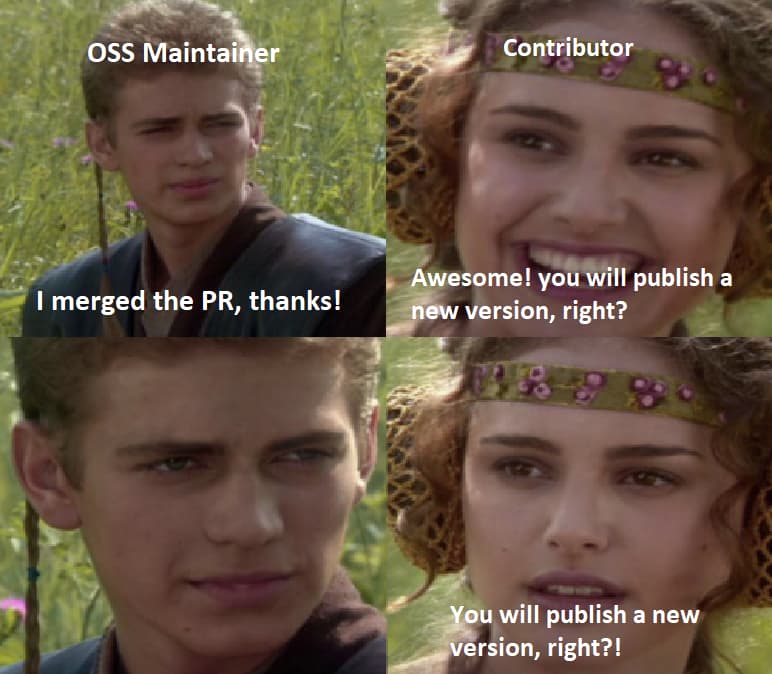
Check out the built-in user manual pages to learn how you can use the CalDAV sync feature. There’s an online copy of the user manual, too. So far nobody reported catastrophic failures, so this sync backend seems to be Enterprise Ready™, but if you do encounter issues related to the CalDAV backend, kindly report them (even better if you can help with fixes and refinements!)
Gamification plugin
Sometimes, a little extra playful motivation can help you go through your day. Part of the brainstorming for gamification and virtual assistant features, Mohieddine Drissi created an initial plugin to add some game-like elements to GTG:
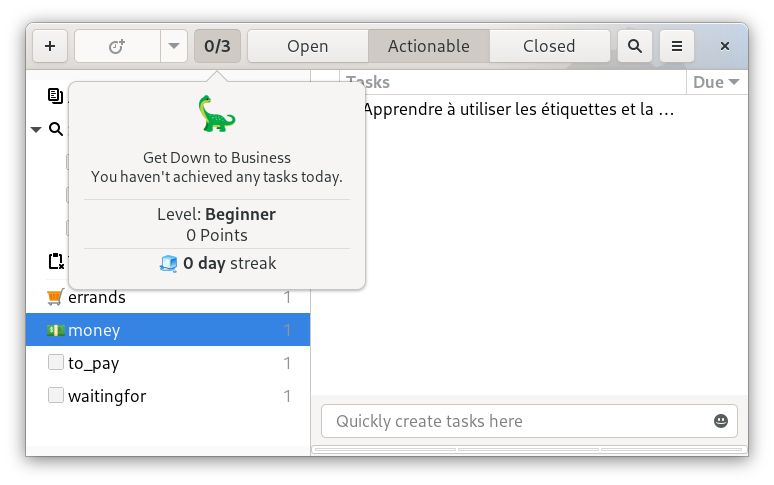
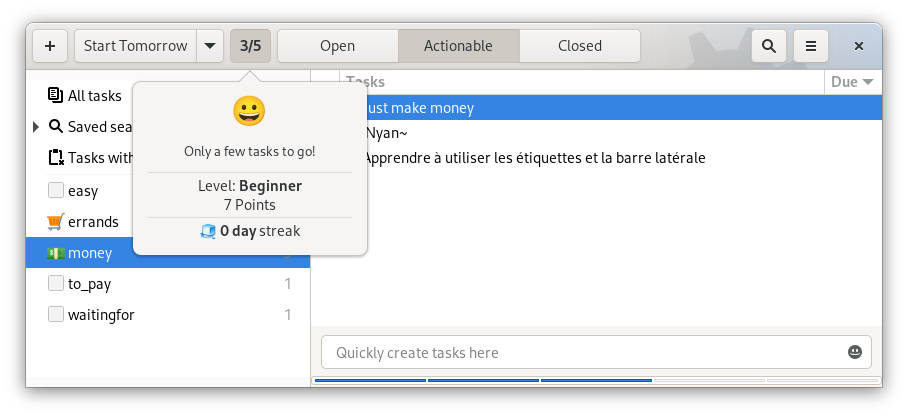
Here too, apologies to Mohieddine and Padmé!
Please try out this new feature, and look at the ticket linked above. Do you see additional features that would be good to add? Should they be part of this plugin, or a separate plugin? Let us know.
Modernized tag editor
This is what it used to look like:
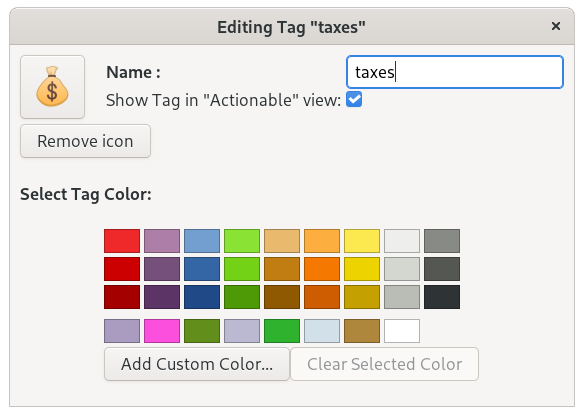
This is what it looks like now:
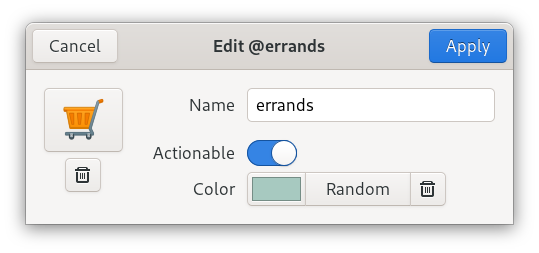
Better procrastination button
One of the most important buttons in my GTG workflow is the “Do it tomorrow” button, and its associated menubutton that lets you reschedule a task’s start date a couple of days into the future. I call that feature the “procrastination” button and this might sound a bit silly, but it really is just an essential way to manage a frequently-changing set of priorities, schedule and obligations, and a way to manage your energy levels.
This release improves this feature with some additional attention to detail:
- Inspired by some initial work by Laurent Combe, First, “Neui” made some pretty impressive hackery to make this an adaptive button that would automatically change its label depending on the available window/screen width, which now makes GTG capable of fitting within a split-screen on smaller screen resolutions. He did this only with Python code within GTG, so in case you’re wondering, GTG is not dependent on libadwaita for this to function.
- In issue #550, I detailed the various inconsistencies between this menubutton and the contextual (right-click) menus for deferring tasks. As we were nearing the 0.6 release, I had a “How Hard Can It Be, Really?™” moment and went through a late night coding session to scratch at least part of my design itch, as it had been annoying me for a year by now and I didn’t want to stare at it for another release cycle. So this pull request of mine solves at least one half of the problem, which is probably better than nothing. Anyone is welcome to finish the 2nd half; you might have to harmonize that code with
dates.py. Until then, here’s how it looks like now:
Errors will be noticed easily again
GTG used to have a fantastically avant-garde technological feature where it would automatically catch and display Python errors (tracebacks) in the graphical user interface. This feature got lost in what led up to the 0.4 release, but it is now making a comeback in GTG 0.6, thanks to Neui’s fine engineering work. It not only catches tracebacks, but also determines whether they are critical or if the application can possibly continue running. I did some UI & UX refinements on top of Neui’s version, and we now have this honest but still reasonably reassuring dialog:
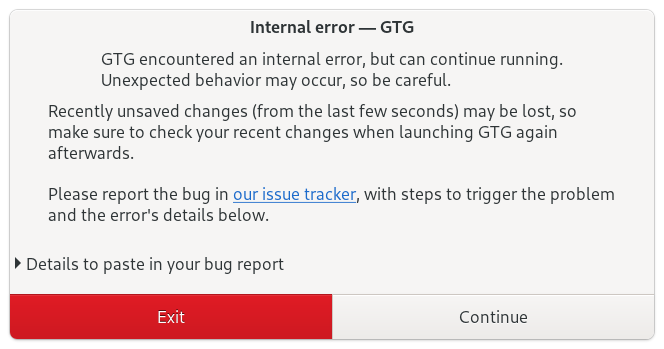
If you click the expander, you get the traceback, along with some additional information, all neatly MarkDown-formatted so that it can be readily pasted alongside your bug report on modern bug trackers:
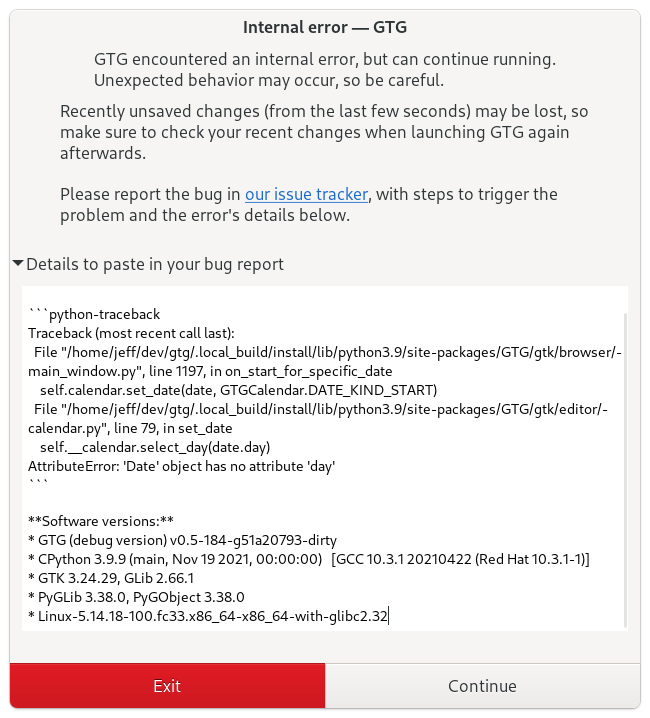
Of course, our software is perfect and you should never actually encounter such errors/uncaught exceptions, but… you never know. In the rare cases where this might happen, as a user, it’s better to be made aware if such a problem occurs—and the possibility of the application’s internal state being inconsistent—right when you trigger the issue, so that you can know what sequence of events led to a problem in the code, and report it in our issue tracker.
If you need to test this dialog (ex.: to test translations) but can’t find bugs in our flawless code, you can use GTG’s built-in “Developer Console” to trigger a traceback that will make that dialog appear (see this tip in our documentation).
Tough times, strong community
It’s been a hell of a year, but it’s still been less than a year since 0.5. Ideally we would be on a faster cycle, but we kept merging new and interesting things, and 2021 was pretty intense for many of us, so we slipped a bit.
Diego had to take time off to take care of his family and personal health, and I, certainly like many readers here, had a pretty busy year in my day-to-day work and beyond.
I deeply appreciate the GTG community’s patience in contributing, getting involved and sticking together to improve this project. Personally, I was not able to keep up very closely with all the activity going on; I received somewhere around 1900 emails related to GTG tickets and merge requests during the 0.6 cycle (from April 6th 2021 to this day), so it is clear that the community’s involvement is really strong here, and that’s awesome. If you’re not already part of this, consider joining the fun!
Let me take a minute to dish out some praise here for the fabulous and tireless work of our most frequent contributors. Thank you,
- “Neui” for contributing a ton of patches, code reviews, advice, that helped the project’s technical architecture progress steadily throughout the year (also, thank you for investigating some of my craziest bugs and providing solutions for them!) ;
- Diego, for plowing through architectural code refactoring, bugfixing, code reviews, during what I know was a difficult time;
- Mildred and François, for making the CalDAV sync backend possible.
- Mohieddine Drissi for creating the gamification plugin
- Danielle Vansia, who not only updated and expanded the user manual so that you could know how the hell to use that CalDAV feature, but also kindly took Diego’s “changes since 0.5” braindump, expanded and polished it into the release notes you can find further below.
- …and many other contributors who have made this release possible by providing bug fixes, code quality improvements, etc. They are listed in the about dialog’s credit section for this release, too 😉
Releasing because I can’t stand 0.5 anymore
You know, my gtg_data.xml file is pretty heavy:
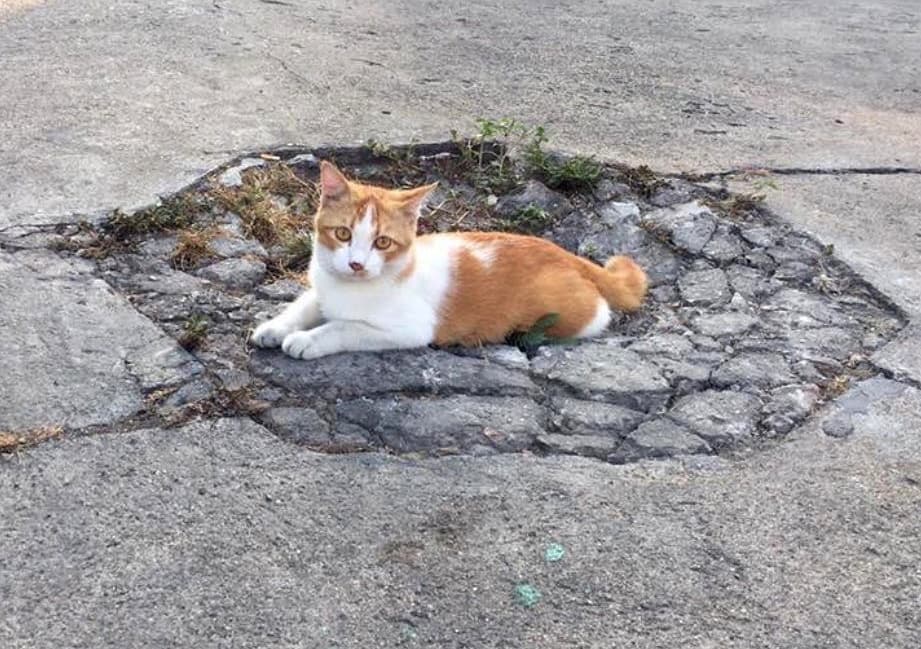
No, I mean really heavy:
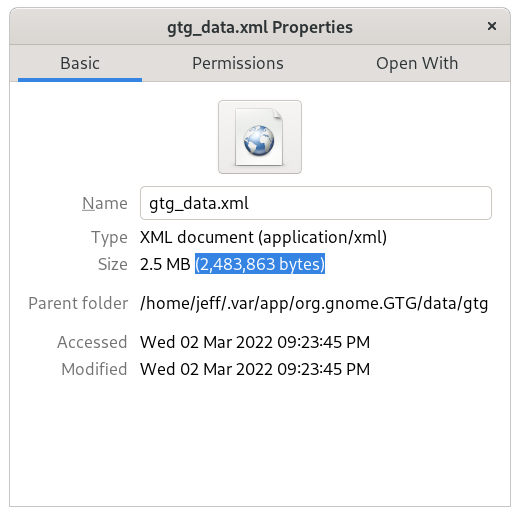
As I write this, my data file contains over 2700 tasks (~1800 open, ~700 done, ~ 200 dismissed). The problem is, when you reach that kind of heaviness in your data file, in 0.5 you will encounter not only occasional crashes “when adding a parent/child task or when marking a recurrent task as done” (as mentioned at the beginning of this blog post), but also when trying to delete a bunch of tasks at once… which meant my “purge tasks” feature was not working anymore, which meant I kept piling on hundreds of “closed” tasks every month that I couldn’t easily remove from my tasks data file, which meant performance kept getting worse and crashes were getting more likely…

With those issues exacerbated by my “abnormally heavy” data file growing heavier every day, you can imagine that version 0.5 had become unbearable for me in my day-to-day use…

…therefore we have a perfect excuse to release version 0.6, which solves those issues! 😇
“Release when you can’t stand the previous release anymore!”
So here we are, GTG 0.6 comes right on time for income tax season! (and if it does help you make it through that period alive, maybe you can deduct some massive donations to Diego via LiberaPay or via GumRoad 😉 especially considering the metric crapton of refactoring work that will need to be accomplished for 0.7…
Release notes
Thanks to Danielle, Diego and Neui for taking the time to research & detail the noteworthy changes to create the NEWS file, which you can read below.
Time to "flatpak update", folks:
